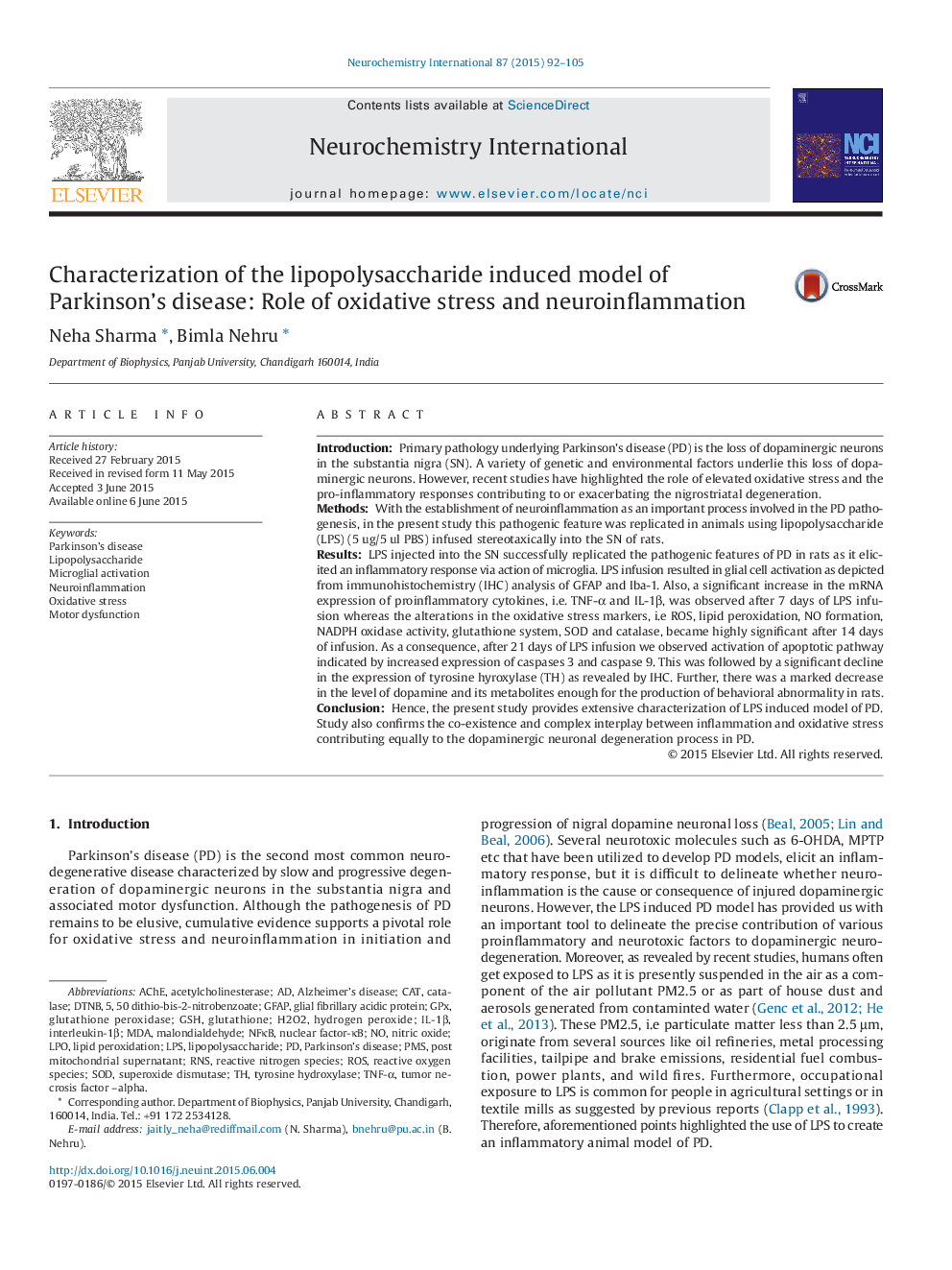| Article ID | Journal | Published Year | Pages | File Type |
|---|---|---|---|---|
| 2200427 | Neurochemistry International | 2015 | 14 Pages |
•Sequential changes in the oxidative stress markers in LPS induced PD model.•Sequential changes in neuroinflammatory markers, i.e TNFα and IL-1β, in LPS induced PD model.•Microglial and astrocyte activation following LPS injection in rats.•Complex interplay between neuroinflammation and oxidative stress responsible for dopaminergic neurodegeneration in LPS model of PD.•Unilateral stereotaxic injection of LPS into SN produced motor deficits in rats.
IntroductionPrimary pathology underlying Parkinson's disease (PD) is the loss of dopaminergic neurons in the substantia nigra (SN). A variety of genetic and environmental factors underlie this loss of dopaminergic neurons. However, recent studies have highlighted the role of elevated oxidative stress and the pro-inflammatory responses contributing to or exacerbating the nigrostriatal degeneration.MethodsWith the establishment of neuroinflammation as an important process involved in the PD pathogenesis, in the present study this pathogenic feature was replicated in animals using lipopolysaccharide (LPS) (5 ug/5 ul PBS) infused stereotaxically into the SN of rats.ResultsLPS injected into the SN successfully replicated the pathogenic features of PD in rats as it elicited an inflammatory response via action of microglia. LPS infusion resulted in glial cell activation as depicted from immunohistochemistry (IHC) analysis of GFAP and Iba-1. Also, a significant increase in the mRNA expression of proinflammatory cytokines, i.e. TNF-α and IL-1β, was observed after 7 days of LPS infusion whereas the alterations in the oxidative stress markers, i.e ROS, lipid peroxidation, NO formation, NADPH oxidase activity, glutathione system, SOD and catalase, became highly significant after 14 days of infusion. As a consequence, after 21 days of LPS infusion we observed activation of apoptotic pathway indicated by increased expression of caspases 3 and caspase 9. This was followed by a significant decline in the expression of tyrosine hyroxylase (TH) as revealed by IHC. Further, there was a marked decrease in the level of dopamine and its metabolites enough for the production of behavioral abnormality in rats.ConclusionHence, the present study provides extensive characterization of LPS induced model of PD. Study also confirms the co-existence and complex interplay between inflammation and oxidative stress contributing equally to the dopaminergic neuronal degeneration process in PD.
Graphical AbstractFigure optionsDownload full-size imageDownload as PowerPoint slide
